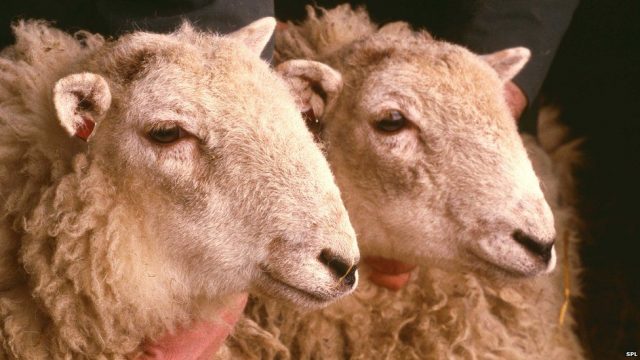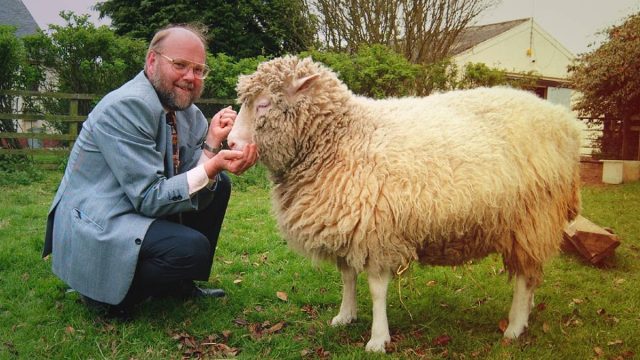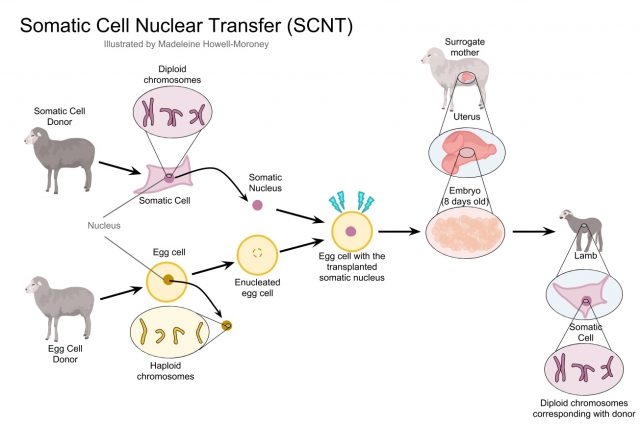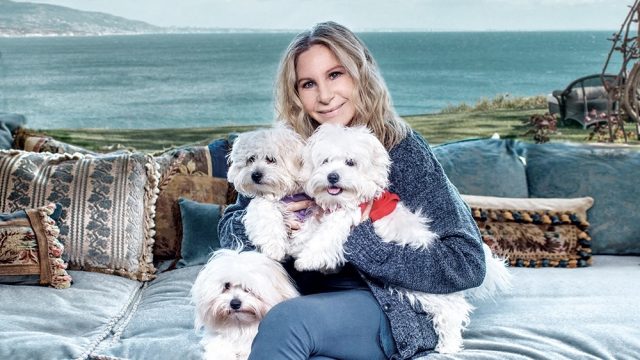More than 90% of the global population are pet lovers. These pets would involve mostly cats and dogs. Being a dog lover myself, I used to have a Samoyed when I was a kid. He was absolutely adorable and lovely. Just like the way these pets brighten up our lives, similarly, they cast a gloomy shadow once they’re gone.
You’ll no longer be able to play with them or be around them every time you’re sad. Hence, keeping pets comes with impending doom. However, what if there was a way where you’d never have to be away from them?
What if they never leave? It is indeed possible. It is a costly affair and the term you’re looking for is pet cloning.
What Is Pet Cloning?
The term cloning refers to a technique that is used to make exact genetic copies of living things. They are identical in nature. A lot like identical twins but man-made and not exactly a natural phenomenon.
Cloning finds its origins back in February of 1977 when a Finn Dorset sheep named Dolly became the first-ever living breathing clone of an adult mammal. In 1996, Professor Keith Campbell and Professor Ian Wilmut conducted an experiment in the Roslin Institute, right outside Edinburgh, Scotland.
Out of the hundreds of experiments they conducted, Dolly was the only sheep that lived while the others died as soon as they were born.

Here’s a fun fact about the name Dolly – John Bracken who was the anesthetist at Dolly’s birth, named her Dolly after the much renowned Dolly Parton. According to him,
“The lamb has been created from mammary cells and basically I thought it would be a good idea to call it Dolly after Dolly Parton. I don’t think I need to explain any more than that.”
Safe to say, John Bracken was a wisecrack.

Initially, pet cloning was looked upon as science went too far as back in the day it was a major breakthrough that could either prove to be advantageous or a cause of destruction. In fact, once Dolly came into existence, there were talks about Hitler wanting to have himself cloned. Nonetheless, such bizarre desires were never achieved as scientists haven’t yet had a breakthrough with cloning humans.
Let’s look at the process of it.
How Does Cloning Work?
With regards to Dolly, embryologist Bill Ritchie had lifted a single mammary cell from a six-year-old ewe and fused it to a second sheep’s unfertilized egg which had been stripped of its DNA. This process is also known as the Somatic Cell Nuclear Transfer.
Somatic Cell Nuclear Transfer is the technique in which the nucleus of a somatic (body) cell is transferred to the cytoplasm of an enucleated egg – an egg that has had its own nucleus removed. Once inside the egg, the somatic nucleus is reprogrammed by egg cytoplasmic factors to become a zygote-fertilized egg nucleus.
Then this fertilized egg is implanted in the uterus or womb of a surrogate mother who then goes on to give birth to the pet of your choice – puppy, foal or kitten.

According to Blake Russel who is the President of Viagen – America’s pet cloning and genetic preservation experts’ company,
“The genetic material of the animal you wish to clone can be stored almost indefinitely before the cloning process takes place. This is thanks to the use of very low frozen temperatures, or cryopreservation.”
Read More: Here’s How The Loss of Their Pet Made This Yorkshire Based Couple Clone Their Dead Dog
Why Is It So Popular Despite Its Cost?
The cloning of animals is a rather costly affair. It ranges from $30,000 to $90,000. Precisely, $50,000 for a dog, $30,000 for a cat and $85,000 for a horse. And the firm that has gotten a lot of recognition for pet cloning is Viagen.
It is an American company that is an expert in genetic preservation and pet cloning. The firm opened in 2015 with barely one or two cases of pet cloning. However, by now they have cloned at least hundreds of pets including those of famous people.
Barbara Streisand got two cloned puppies of her pet Samantha back in 2018 from Viagen.
That very year, The X-Factor judge, Simon Cowell revealed his plans to clone his beloved dogs Squiddly, Diddly and Freddy. He was willing to pay a reported $196,024.19 on replicating his Yorkshire terriers by getting their cells harvested using a South Korean company.

Pet cloning is so popular owing to the love and attachment the owners have towards their pets. A retired New York police officer, Mr. Mendola, back in 2006, brought home with him a stray scruffy dog and named her Princess. She was adorable and loved playing with children.
However, in 2016 she was diagnosed with terminal cancer. Immediately, Mr. Mendola sought out Viagen and had two clones of Princess made – Princess Ariel and Princess Jasmine.
The BBC reported that according to Mr. Mendola,
“The spotting, the hair, everything is pretty much the same, even the mannerisms. You know how dogs sometimes get up and shake their whole body? They both do it at the same time, just like Princess did.”
Dark Side Of Pet Cloning
Be as it may, pet cloning is not without its own set of flaws.
According to animal welfare expert at the Royal Society for the Prevention of Cruelty to Animals, Penny Hawkins,
“It can be painful and distressing for the female animals that have their eggs removed for donation, and for those that are prepared for surrogate pregnancy.”
Imagine how painful it must be for the surrogate mother to go through the process again and again. Let’s take the case of Dolly for example. Dolly was the 277th lamb that survived. The ones before her died. The pain isn’t just physical but the trauma of having to lose a child, again and again, is excruciating.
Penny Hawkins further states,
“There is so much more to an animal than their DNA, and cloned animals will inevitably have different life experiences, resulting in animals with different personalities.”
Even in identical twins, the similarities end in their physical features. They are a mirror to each other and that reflection is limited to only physical attributes.
For example, the identical twins – Phoebe and Ursula Buffay from the sitcom Friends. Both of them are the exact replica of each other but in terms of personality, one is kind, caring and a rather likable personality whereas the other is cold, selfish, and disagreeable.
Similarly, in the case of pet cloning, it doesn’t necessarily mean that the personality of the pet whose genetic material is being used will turn out to be exactly the same.
According to the director of the animal rights group People for the Ethical Treatment of Animals (Peta), Elisa Allen,
“Animals’ personalities, quirks, and very essence simply cannot be replicated. And when you consider that millions of wonderful, adoptable dogs and cats are languishing in animal shelters every year or dying in terrifying ways after being abandoned, you realize that cloning adds to the homeless-animal overpopulation crisis.”
To conclude, loving and cherishing your pets is one thing but going to the extent of cloning them just so you can be with them is albeit a beautiful sentiment but also hazardous at the same time.
Disclaimer: This post is fact-checked.
Image Sources: Google Images
Sources: BBC, The Guardian, CNBC
Find the Blogger: @Rishita51265603
This post is tagged under pet cloning, identical pets, man-made, Finn Dorset sheep, Dolly, February 1977, Professor Keith Campbell, Professor Ian Wilmut, Roslin university, Edinburgh, Scotland, Dolly Parton, somatic cell nuclear transfer, Viagen, American pet cloning company, genetic preservation, costs fortunes, Mr. Mendola, retires New York officer, Princess, cloned dogs, Barbara Streisand, Simon Cowell, The X-Factor judge, painful and distressing for the female animals, Phoebe and Ursula Buffay
We do not hold any right/copyright over any of the images used. These have been taken from Google. In case of credits or removal, the owner may kindly mail us.
More Recommendations:
China Introduced Six Cloned Dogs To Its Police Force






























